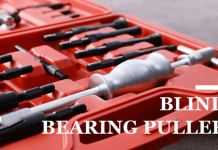Running a food processing plant today requires more than just skilled labor and quality ingredients. Efficiency is the cornerstone of success, and it is directly influenced by the type of equipment you choose. The right tools can streamline workflows, cut down on manual tasks, and ensure higher product consistency. At the same time, poor equipment choices can slow production, create bottlenecks, and even compromise food safety. That’s why making smart equipment decisions is essential.
This article explores key equipment choices that every food processing plant should consider, with practical insights on how they enhance efficiency and long-term productivity.
Investing in Energy-Efficient Processing Machinery
Energy use in food processing plants is a major expense, but it is also an area with the potential for big improvements. Older machines often consume far more electricity than necessary, creating a strain on both budgets and sustainability efforts. Modern energy-efficient machinery is designed to perform at high levels while keeping power consumption lower. These machines often feature variable speed drives, advanced insulation, and automation features that reduce idle energy use.
Making the switch to energy-efficient equipment helps plants lower operating costs while aligning with growing industry demand for sustainable practices.
The Role of Commercial Rack Washer Systems
Sanitation is at the heart of any food processing operation. Without the right cleaning systems, even the most efficient plant risks contamination, product recalls, and regulatory violations. A commercial rack washer system, such as the Smoke Truck Rack Washer from CMP, provides an effective solution for maintaining hygiene standards. These washers are designed to clean racks, trays, and smoke trucks with consistent pressure and thorough coverage.
The advantage of a rack washer is that it eliminates the time and labor of manual scrubbing while ensuring every surface is cleaned properly. With programmable wash cycles and options for different rack sizes, plants can adapt the system to fit their specific needs. The Smoke Truck Rack Washer, for example, uses high-pressure water jets and durable stainless-steel construction to deliver long-lasting performance.
Conveyor Systems for Smooth Workflow
Moving products through different stages of production is one of the most time-consuming tasks in a food plant. Manual handling slows down output and increases the risk of errors or contamination. Conveyor systems offer a solution by providing steady, automated transport from one stage to another.
Modern conveyor systems come in various designs, including belt conveyors, roller conveyors, and modular systems. The right choice depends on the type of food being processed and the level of customization required. For example, belt conveyors are excellent for delicate products, while roller conveyors are ideal for heavier loads. By reducing manual transport, conveyors improve workflow, minimize downtime, and allow employees to focus on tasks that require more skill and oversight.
Smart Packaging Equipment
Packaging is often one of the final steps in food processing, but it plays a vital role in efficiency and quality. Automated packaging machines speed up this stage while ensuring consistent results. They also reduce waste by using precise measurements and minimizing errors.
Beyond speed, packaging equipment has grown smarter. Many systems now integrate with labeling and tracking software, allowing products to move seamlessly into distribution. This integration doesn’t just save time; it also helps meet traceability standards, which are increasingly important for consumer confidence and regulatory compliance. Investing in packaging machines that combine automation with tracking technology ensures both faster output and stronger quality control.
Temperature Control and Monitoring Systems
Temperature management is one of the most critical elements in food safety. A small mistake in refrigeration or heating can compromise entire batches of product. Smart temperature control and monitoring systems provide plants with the ability to maintain consistent conditions across storage and processing areas.
These systems often come with digital sensors and real-time monitoring features. When temperatures rise or fall outside of safe ranges, the system can send alerts or even adjust conditions automatically. This not only protects the integrity of the food but also reduces product losses and improves compliance with safety regulations.
High-Quality Mixing and Blending Equipment
In many food processing plants, mixing and blending form the foundation of production. The quality of this step directly influences product consistency, taste, and texture. Outdated or undersized mixers often struggle to deliver uniform results, leading to wasted ingredients and lost time. Modern mixing and blending equipment solves these challenges with advanced designs that improve efficiency and accuracy.
Newer machines often come with programmable settings that allow operators to adjust speed, timing, and sequence with precision. This makes it easier to maintain consistency across batches, even when processing different recipes or product lines.
Automated Inspection and Sorting Machines
Quality control is a vital part of food production, but manual inspection is slow and prone to human error. Automated inspection and sorting machines help solve this problem by using advanced sensors, cameras, and even artificial intelligence to identify defects. These systems can detect issues like foreign objects, size inconsistencies, or damaged products far faster than the human eye.
By integrating automated inspection into the production line, plants improve both speed and accuracy. These machines don’t tire or lose focus, which means every product is checked against the same standards. In addition, automated sorting allows defective products to be removed without stopping production, maintaining workflow and protecting overall product quality. In the long term, this protects the brand’s reputation and reduces the cost of waste.
Flexible Cutting and Slicing Machines
Cutting and slicing may seem simple, but in food processing, this task requires precision and adaptability. Products often need to be cut into different shapes and sizes, depending on customer requirements or packaging needs. Manual cutting takes time and introduces inconsistency, while basic machines often lack the ability to adjust quickly.
Flexible cutting and slicing machines address these challenges with adjustable settings and interchangeable blades. They allow plants to shift between different cut sizes or styles without significant downtime. This versatility helps plants serve a wider range of markets and adapt to new demands more easily.
Efficiency in food processing is not achieved by speed alone but by making decisions that strengthen every stage of production. Smart equipment choices give plants the ability to manage sanitation with less labor, keep product movement steady, and maintain precision in mixing, cutting, and packaging.
The real advantage of investing in the right equipment is that it creates a foundation for growth. Plants that prioritize modern, reliable systems can scale production, meet stricter safety standards, and respond quickly to changing market demands.









































